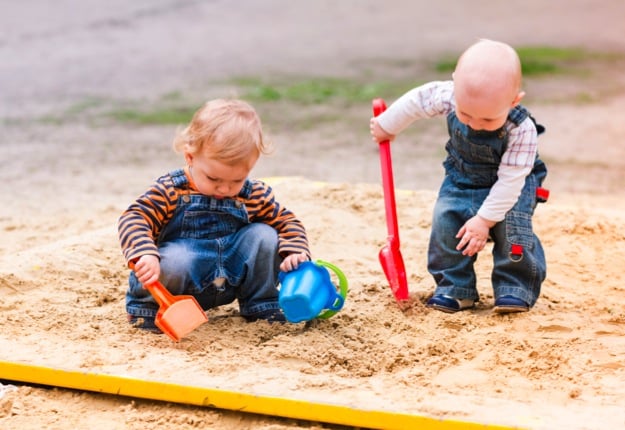Many activities foster the development of children. While we often think of a classroom or educational activities such as learning how to read, we should never underestimate the environmental influences on child development.
The playground can actually be one of the best places to teach kids valuable skills that will serve them later in life.
The following are five examples of how a typical playground can foster education and child development:
1) Fosters social skills
Perhaps the most important type of lesson that a playground can teach kids is how to get along with others. Simple activities such as slides and seesaws, for example, demand sharing and cooperation.
Kids learn that they must wait their turn to use toys and playground equipment.
They learn, through speaking, playing and body language, how to pick up social cues from other kids. These activities are extremely important to the psychology of child development.
2) Ball games build motor and coordination skills
Many games that kids play outside develop a variety of motor skills and hand-eye coordination. This is especially true of ball games, including tetherball, whiffle ball and kickball.
These games require kids to gauge distances, take aim and hit, kick or catch the ball at the appropriate time.
Such activities are not only good for physical coordination, they also engage important centres of the brain.
- Why you should grow a garden with your kids
- Playgrounds and beyond: Improve your child’s social skills
3) The benefits of swinging
Swinging may seem like a fun yet pointless activity that almost all kids enjoy. Yet it actually has benefits that will foster a child’s development.
Swinging requires a sense of balance and the use of motor skills, the simple act of propelling the swing into motion demands certain coordination.
When kids swing, they are also using the part of their brains that process velocity and direction.
4) Climbing on monkey bars
Climbing on monkey bars is another activity that has multiple benefits; climbing builds muscle strength as well as developing balance and coordination.
To climb, children must learn to judge distances, such as between one bar and another. They must also learn to coordinate their various body parts, so they know when to move their arms and legs. These skills are also developed when kids climb on trees.
5) The sandpit
Sandpits are enduring symbols of childhood, and are another activity that is more educational than first appears.
Kids shovelling sand into a container are learning how to use tools for moving materials and measurement. Sandpits are also a social environment where kids play together and share tasks. These benefits can also be enjoyed, to an even greater extent, by trips to the beach where the amount of sand and water is virtually unlimited.
Even a small sandpit in a playground helps kids develop a variety of valuable skills.
These are just a few examples of how playground equipment can have a significant impact on education and child development. Playgrounds can be important, giving kids a chance to play outside, interact with their peers and move around in ways that foster their development.
Do you have any other playground or outdoor equipment to add to this list? Please share in the comments below.























9:33 am
9:57 am
12:58 pm
6:58 pm
9:44 pm
8:04 pm
11:37 am
6:46 pm
7:13 pm
6:54 pm
7:26 pm
8:46 pm
2:56 pm
2:44 pm
1:35 pm
10:28 pm
10:00 am
3:07 pm
5:14 pm
3:05 pm
- 1
- 2
- »
Post a commentTo post a review/comment please join us or login so we can allocate your points.